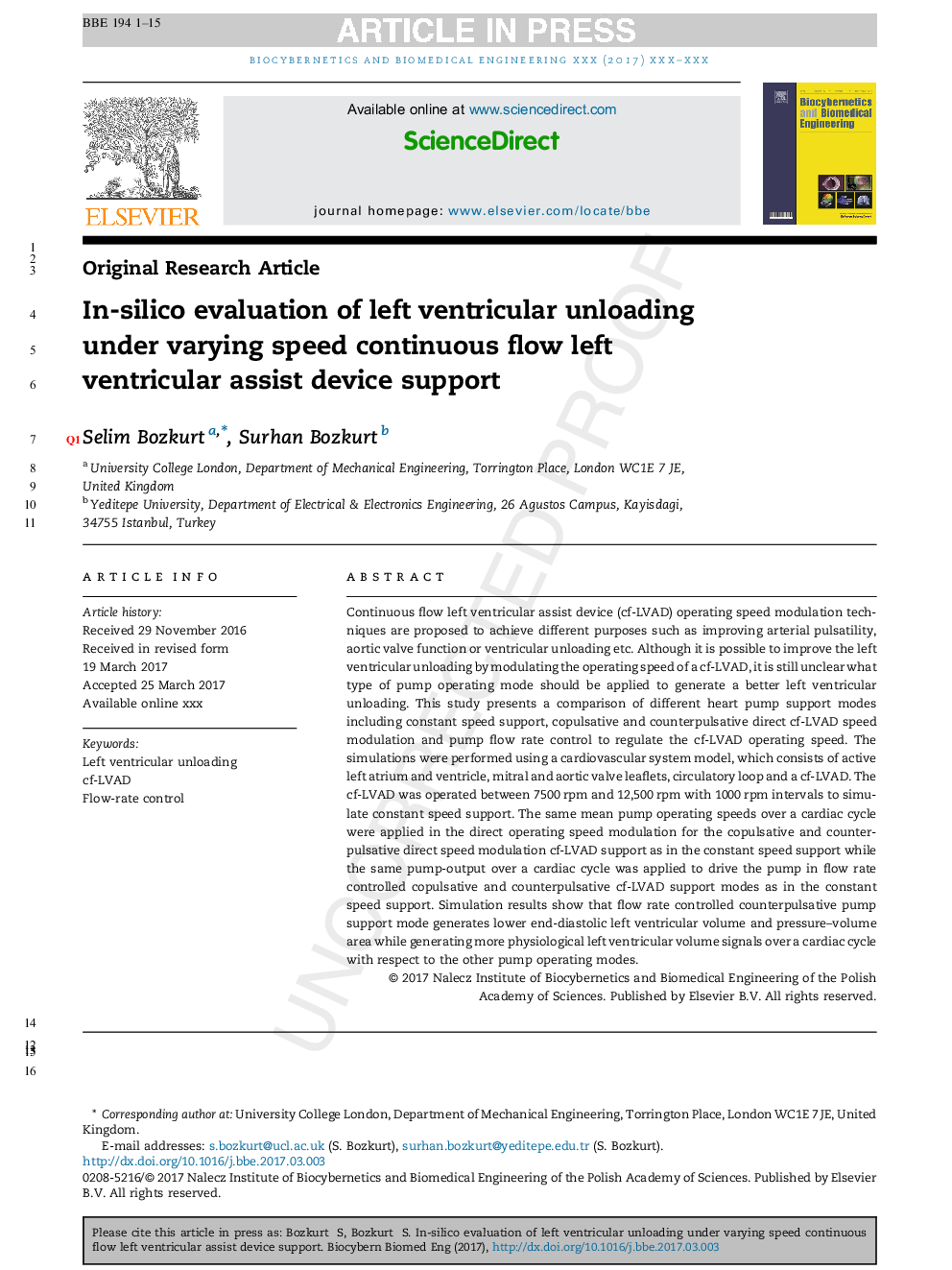| Article ID | Journal | Published Year | Pages | File Type |
|---|---|---|---|---|
| 6484209 | Biocybernetics and Biomedical Engineering | 2017 | 15 Pages |
Abstract
Continuous flow left ventricular assist device (cf-LVAD) operating speed modulation techniques are proposed to achieve different purposes such as improving arterial pulsatility, aortic valve function or ventricular unloading etc. Although it is possible to improve the left ventricular unloading by modulating the operating speed of a cf-LVAD, it is still unclear what type of pump operating mode should be applied to generate a better left ventricular unloading. This study presents a comparison of different heart pump support modes including constant speed support, copulsative and counterpulsative direct cf-LVAD speed modulation and pump flow rate control to regulate the cf-LVAD operating speed. The simulations were performed using a cardiovascular system model, which consists of active left atrium and ventricle, mitral and aortic valve leaflets, circulatory loop and a cf-LVAD. The cf-LVAD was operated between 7500Â rpm and 12,500Â rpm with 1000Â rpm intervals to simulate constant speed support. The same mean pump operating speeds over a cardiac cycle were applied in the direct operating speed modulation for the copulsative and counterpulsative direct speed modulation cf-LVAD support as in the constant speed support while the same pump-output over a cardiac cycle was applied to drive the pump in flow rate controlled copulsative and counterpulsative cf-LVAD support modes as in the constant speed support. Simulation results show that flow rate controlled counterpulsative pump support mode generates lower end-diastolic left ventricular volume and pressure-volume loop area while generating more physiological left ventricular volume signals over a cardiac cycle with respect to the other pump operating modes.
Keywords
Related Topics
Physical Sciences and Engineering
Chemical Engineering
Bioengineering
Authors
Selim Bozkurt, Surhan Bozkurt,
